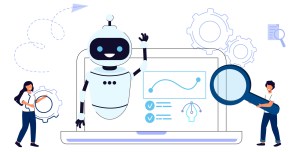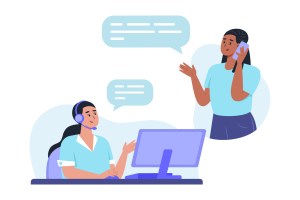Make Your Customers Feel Loved with Mass Personalization



For many businesses, mass personalization — the act of creating campaigns or websites targeted to each specific customer’s history — has become crucial to getting sales.

Kelsey Jones
Today’s digital customers have a shorter attention span and less time than ever before to spend making a purchasing decision. Because the internet makes it possible to scope out product and service offerings from businesses around the world in a matter of minutes, deciding who to go with often comes down to three things: reviews from others, price, and customer service.
What’s more, many people choose a company based on just one of these aspects if it is more important to them than anything else. In order to stay competitive in today’s market and build relationships with your customers, use the highest level of customer targeting to help you rise above the noise to reach the customer at the right time.
For many businesses, mass personalization — the act of creating campaigns or websites targeted to each specific customer’s history — has become crucial to getting sales. While it’s easier than ever to create content specific to what a customer is looking for (Amazon is perfect example of this, according to Moravia), you must ensure your efforts at mass personalization go as smoothly as possible and avoid hiccups due to missing data or software glitches.
People Like Their Own Name
Mass personalization got its start primarily in email campaigns. In most email providers it’s common to have a {NAME} field, where each recipient’s first name, instead of a generic subject line or salutation, is inserted into the email they receive.
This works because people like hearing and reading their own name: Studies have shown different parts of the brain light up when someone hears their name over others.
Using Mass Personalization E-Commerce Options
Today’s mass personalization allows us to take this a step further and not only call someone by name, but offer them specific products and services targeted to their past purchasing history or online behaviour. Amazon uses this method frequently, and they actually make about 35 per cent of their total revenue from product recommendations.
By offering “if you like that, then you’ll like this” product recommendations, you encourage customers to continue shopping with you or stay on your site. Content can even be mass personalized in this way: There are several WordPress plugins, for example, that generate related content for the website visitor to continue to peruse once they’ve finished an article.
Other content management systems and e-commerce platforms allow online stores to do the same. Thanks to cookies, this is based not only on the product page the user is currently on, but also on their past browsing history. Cookies allow websites to make their own product recommendations, as well as follow users once they’ve clicked away from the site through remarketing.
Remarketing ads on Google AdWords can remind users of what they were looking at previously. The goal with remarketing is to entice users to follow through with a purchase. Many of these ads offer a special discount or offer only available through the ad.
Additionally, many email campaigns can do the same, especially if a user has already entered their email address but then abandons their cart. Sending an email reminding users of the products they left behind (with a special promo code) can increase conversion rates.
Make Sure Defaults For Missing Data Aren’t Disingenuous
Even if you don’t have an e-commerce site, you can still use mass personalization through exclusive offers and unique campaigns, such as custom landing pages for returning customers.
When you build campaigns based on mass personalization, make sure your data isn’t missing any crucial pieces, such as proper names. Keep data as complete as possible through regular quality checks and removal of inaccurate or inactive customers who don’t interact with your company, even after you attempt a re-engagement campaign.
And even if you think you have covered all your bases and have 100 per cent complete data, it’s still important to spend quality time on creating a masterful default message that can be sent when some contact data is missing. Instead of the dreaded “Dear ,” that we’ve all seen in email campaigns, set the default to make the salutation more generic.
To create unique landing pages for visitors who haven’t given you any data (or for those whose data is incomplete), crowdsource popular products and build a custom experience based on what their persona is interested in. This will lead to higher conversion rates than simply redirecting them to your homepage or to a landing page targeting a different persona.
Mass Personalization Can Lead to a Better Customer Experience
Overall, mass personalization, when done well, offers a better experience for customers, leading to more purchases and greater customer loyalty. By offering custom options for customers, you curb decision fatigue and cut down on the effort a customer has to spend when they attempt to find what they are looking for.
Figure out which types of mass personalization will best fit your strategy and budget. Consider, too, your default messages and the completeness of your data. The results can lead to a higher conversion rate and better utilization of time and efforts.
Learn what high-powered marketing teams are doing to improve their marketing efforts in our eBook, “2016 State of Marketing.”
Share “Make Your Customers Feel Loved with Mass Personalization” On Your Site
 >
>



















